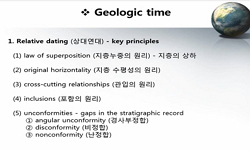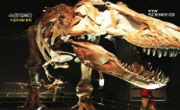Ceramide, cholesterol and free fatty acids are the major intercellular lipids, maintaining the integrity of the skin barrier. However, the roles of these lipids in canine skin barrier function are little known. The aim of this study was to evaluate th...
http://chineseinput.net/에서 pinyin(병음)방식으로 중국어를 변환할 수 있습니다.
변환된 중국어를 복사하여 사용하시면 됩니다.
- 中文 을 입력하시려면 zhongwen을 입력하시고 space를누르시면됩니다.
- 北京 을 입력하시려면 beijing을 입력하시고 space를 누르시면 됩니다.


Effect of Topical Application of Intercellular Lipids on Sodium Lauryl Sulphate-Damaged Skin Barrier Function in Dogs
한글로보기https://www.riss.kr/link?id=A104696962
- 저자
- 발행기관
- 학술지명
- 권호사항
-
발행연도
2008
-
작성언어
English
- 주제어
-
등재정보
KCI등재,SCOPUS
-
자료형태
학술저널
- 발행기관 URL
-
수록면
330-339(10쪽)
-
KCI 피인용횟수
1
- 제공처
- 소장기관
-
0
상세조회 -
0
다운로드
부가정보
다국어 초록 (Multilingual Abstract)
skin barrier. However, the roles of these lipids in canine skin barrier function are little known. The aim of this study
was to evaluate the repairing effects of 2% ceramide (CER), 2% cholesterol (CHO), 2% linoleic acid (LIN) and 2%
intercellular lipid mixture (ILM) on damaged canine skin barrier by 1.25% sodium lauryl sulphate (SLS). Transepidermal
water loss (TEWL), skin hydration, skin pH and skin thickness were assessed. Histological profiles and transmission
electron microscopic (TEM) profiles were assessed on day 12. SLS effectively induced the canine skin barrier damage.
TEWL was significantly decreased by topical application of CER and ILM in SLS and vehicle-treated skin on day
8 and 12, respectively (p < 0.05, p < 0.01). By end of the experiment all lipids significantly decreased the TEWL as
compared with SLS and vehicle control, but CER and ILM more significantly decreased the TEWL than LIN and
CHO, respectively (p < 0.01). Skin hydration was significantly increased by CER and ILM during experimental periods
(p < 0.01). Skin pH was significantly decreased by CER, LIN and ILM. In histological profiles, the thickness of the
stratum corneum (SC) was significantly increased by the SC lipids as compared with vehicle and SLS (p < 0.01).
Especially, CER and ILM showed more prominent improvement of barrier recovery. In TEM of the SC, SLS induced
exfoliations of corneodesmosomes in the SC, and CER and ILM effectively protected exfoliations of corneodesmosomes
on SLS-damaged canine skin. These results indicated that topical application of CER and ILM dramatically improved
damaged-skin barrier function by SLS. Also, it was considered that the use of CER or ILM was recommended for
the management of skin barrier dysfunction by irritant and inflammatory skin disorders such as atopic dermatitis.
Ceramide, cholesterol and free fatty acids are the major intercellular lipids, maintaining the integrity of the
skin barrier. However, the roles of these lipids in canine skin barrier function are little known. The aim of this study
was to evaluate the repairing effects of 2% ceramide (CER), 2% cholesterol (CHO), 2% linoleic acid (LIN) and 2%
intercellular lipid mixture (ILM) on damaged canine skin barrier by 1.25% sodium lauryl sulphate (SLS). Transepidermal
water loss (TEWL), skin hydration, skin pH and skin thickness were assessed. Histological profiles and transmission
electron microscopic (TEM) profiles were assessed on day 12. SLS effectively induced the canine skin barrier damage.
TEWL was significantly decreased by topical application of CER and ILM in SLS and vehicle-treated skin on day
8 and 12, respectively (p < 0.05, p < 0.01). By end of the experiment all lipids significantly decreased the TEWL as
compared with SLS and vehicle control, but CER and ILM more significantly decreased the TEWL than LIN and
CHO, respectively (p < 0.01). Skin hydration was significantly increased by CER and ILM during experimental periods
(p < 0.01). Skin pH was significantly decreased by CER, LIN and ILM. In histological profiles, the thickness of the
stratum corneum (SC) was significantly increased by the SC lipids as compared with vehicle and SLS (p < 0.01).
Especially, CER and ILM showed more prominent improvement of barrier recovery. In TEM of the SC, SLS induced
exfoliations of corneodesmosomes in the SC, and CER and ILM effectively protected exfoliations of corneodesmosomes
on SLS-damaged canine skin. These results indicated that topical application of CER and ILM dramatically improved
damaged-skin barrier function by SLS. Also, it was considered that the use of CER or ILM was recommended for
the management of skin barrier dysfunction by irritant and inflammatory skin disorders such as atopic dermatitis.
참고문헌 (Reference)
1 Hachem JP, "pH directly regulates epidermal permeability barrier homeostasis, and stratum corneum integrity/cohesion" 121 : 345-353, 2003
2 Bernard D, "Update on desquamation and first evidence for the presence of the endoglycosidase heparanase 1 in the human stratum corneum. In: The essential stratum corneum" Tayler & Francis 17-24, 2002
3 Fartasch M, "Ultrastructure of the epidermal barrier after irritation" 37 : 193-199, 1997
4 Grubauer G, "Transepidermal water loss: the signal for recovery of barrier structure and function" 30 : 323-333, 1989
5 Bouwstra JA, "The role of ceramide composition in the lipid organization of the skin barrier" 1419 : 127-136, 1999
6 Elias PM, "The intercorneocyte space. In: Stratum corneum" Springer Verlag 53-67, 1983
7 Haake A, "Structure and function of the skin: overview of the epidermis and dermis. In: The biology of the skin" The Parthenon Publishing Group 19-45, 2001
8 Scott DW, "Structure and function of the skin. In: Muller & Kirk’s Small Animal Dermatology" WD Saunders 1-70, 2001
9 De Jongh CM, "Stratum corneum cytokines and skin irritation response to sodium lauryl sulfate" 51 : 325-333, 2006
10 Mauldin EA, "Skin barrier function and canine atopic dermatitis. Hill’s symposium on dermatology" Palm springs 24-27, 2006
1 Hachem JP, "pH directly regulates epidermal permeability barrier homeostasis, and stratum corneum integrity/cohesion" 121 : 345-353, 2003
2 Bernard D, "Update on desquamation and first evidence for the presence of the endoglycosidase heparanase 1 in the human stratum corneum. In: The essential stratum corneum" Tayler & Francis 17-24, 2002
3 Fartasch M, "Ultrastructure of the epidermal barrier after irritation" 37 : 193-199, 1997
4 Grubauer G, "Transepidermal water loss: the signal for recovery of barrier structure and function" 30 : 323-333, 1989
5 Bouwstra JA, "The role of ceramide composition in the lipid organization of the skin barrier" 1419 : 127-136, 1999
6 Elias PM, "The intercorneocyte space. In: Stratum corneum" Springer Verlag 53-67, 1983
7 Haake A, "Structure and function of the skin: overview of the epidermis and dermis. In: The biology of the skin" The Parthenon Publishing Group 19-45, 2001
8 Scott DW, "Structure and function of the skin. In: Muller & Kirk’s Small Animal Dermatology" WD Saunders 1-70, 2001
9 De Jongh CM, "Stratum corneum cytokines and skin irritation response to sodium lauryl sulfate" 51 : 325-333, 2006
10 Mauldin EA, "Skin barrier function and canine atopic dermatitis. Hill’s symposium on dermatology" Palm springs 24-27, 2006
11 Welzel J, "SLS-irritated human skin show no correlation between degree of proliferation and TEWL increase" 290 : 615-620, 1998
12 Bouwstra JA, "Role of ceramide 1 in the molecular organization of the stratum corneum lipids" 39 : 186-196, 1998
13 Paepe KD, "Repair of acetone- and sodium lauryl sulphate-damaged human skin barrier function using topically applied emulsions containing barrier lipids" 16 : 587-594, 2002
14 Mao-Qiang M, "Optimization of physiological lipid mixtures for barrier repair" 106 : 1096-1101, 1996
15 Zettersten EM, "Optimal ratios of topical stratum corneum lipids improve barrier recovery in chronologically aged skin" 37 : 403-408, 1997
16 Gloor M, "On the course of the irritant reaction after irritation with sodium lauryl sulphate" 40 : 144-148, 2004
17 Smith HR, "Irritant threshold and histological response of epidermis to irritant application" 51 : 227-230, 2004
18 Ballou LR, "Interleukin-1-mediated PGE2 production and sphingomyelin metabolism" 267 : 20044-20050, 1992
19 Heinemann C, "Induction of a hardening phenomenon by repeated application of SLS: analysis of lipid changes in the stratum cormeun" 85 : 290-295, 2005
20 Fluhr JK, "Generation of free fatty acids from phospholipids regulates stratum corneum acidification and integrity" 117 : 44-51, 2001
21 Wertz PW, "Epidermal lipid metabolism and barrier function of stratum corneum. In: Biochemical modulation of skin reaction" CRC press 35-44, 2000
22 Imman AO, "Electron microscopic observations of stratum corneum intercellular lipids in normal and atopic dogs" 38 : 720-723, 2001
23 Aoki M, "Distribution and expression of desmosomal proteins, desmoglein-1 and -3, in normal canine skin and mucous membrane. In: Advances in Veterinary Dermatology" Blackwell Publishing 30-36, 2000
24 Okuda M, "Detergent-induced epidermal barrier dysfunction and its prevention" 30 : 173-179, 2002
25 Chapman SJ, "Desmosomes, corneosomes and desquamation" 282 : 304-310, 1990
26 Brubach GJ, "Cytokines in the skin. In: The biology of the skin" The Parthenon Publishing Group 299-331, 2001
27 Simon M, "Corneodesmosomal proteins are proteolysed in vitro by both SCTE and SCCE two proteases which are thought to be involved in desquamation. In: The essential stratum corneum" Tayler & Francis 57-61, 2002
28 Takagl Y, "Characterization of surfactant-induced skin damage through barrier recovery induced by pseudoacylceramides" 211 : 128-134, 2005
29 Wertz PW, "Ceramides of pig epidermis: structure determination" 24 : 759-765, 1983
30 Goldstein AM, "Ceramides and the stratum corneum: structure, function, and new methods to promote repair" 42 : 256-259, 2003
31 Dunstan R.W, "Age- and breed-related differences in canine skin surface lipids and pH. In: Advances in Veterinary Dermatology" Blackwell Publishing 37-42, 2000
32 Fuchs E, "A structural scaffolding of intermedicate filaments in health and disease" 279 : 514-519, 1998
동일학술지(권/호) 다른 논문
-
- 한국임상수의학회
- 김은태
- 2008
- KCI등재,SCOPUS
-
Sinoatrial Reentrant Tachycardia in a Yorkshire Cross Dog
- 한국임상수의학회
- 남소정
- 2008
- KCI등재,SCOPUS
-
- 한국임상수의학회
- 박신애
- 2008
- KCI등재,SCOPUS
-
- 한국임상수의학회
- 최호정
- 2008
- KCI등재,SCOPUS
분석정보
인용정보 인용지수 설명보기
학술지 이력
| 연월일 | 이력구분 | 이력상세 | 등재구분 |
|---|---|---|---|
| 2023 | 평가예정 | 해외DB학술지평가 신청대상 (해외등재 학술지 평가) | |
| 2020-01-01 | 평가 | 등재학술지 유지 (해외등재 학술지 평가) |  |
| 2010-01-01 | 평가 | 등재학술지 유지 (등재유지) |  |
| 2008-01-01 | 평가 | 등재학술지 유지 (등재유지) |  |
| 2005-01-01 | 평가 | 등재학술지 선정 (등재후보2차) |  |
| 2004-01-01 | 평가 | 등재후보 1차 PASS (등재후보1차) |  |
| 2003-01-01 | 평가 | 등재후보학술지 유지 (등재후보1차) |  |
| 2002-01-01 | 평가 | 등재후보학술지 유지 (등재후보1차) |  |
| 2000-07-01 | 평가 | 등재후보학술지 선정 (신규평가) |  |
학술지 인용정보
| 기준연도 | WOS-KCI 통합IF(2년) | KCIF(2년) | KCIF(3년) |
|---|---|---|---|
| 2016 | 0.05 | 0.05 | 0.04 |
| KCIF(4년) | KCIF(5년) | 중심성지수(3년) | 즉시성지수 |
| 0.04 | 0.04 | 0.213 | 0 |




 ScienceON
ScienceON







